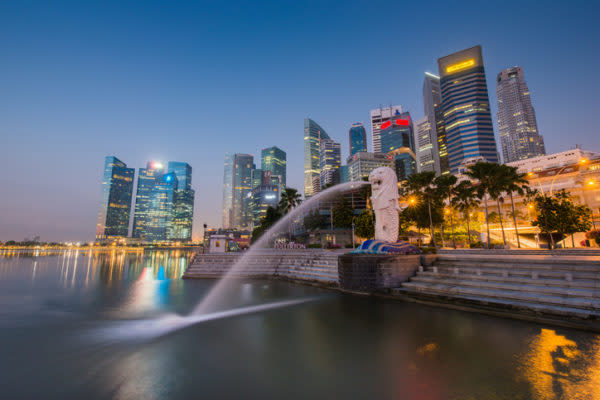Singapore’s Quantedge Capital bucks the trend

The global hedge fund industry is going through a crisis. According to a report by eVestments, investors withdrew US$25.2 billion (S$35.1 billion) from hedge funds in July. This is the largest monthly withdrawal in the last seven years.
In another sign of the reversal that the hedge fund industry is facing, Europe’s Brevan Howard Asset Management LLP has said that it will charge a 0% fee to some customers from December.
This is a far cry from what it used to be. Brevan’s flagship Master fund had registered a return of 20% in 2008. But for the last three years, it has been reporting losses. It expects redemptions of US$3 billion (S$4.18 billion) in 2016.
According to a report by Hedge Fund Research, 979 funds closed in 2015. Blackstone Group, which is among the world’s largest hedge fund investors, holds the view that 2016 would also be a bad year. Its president, Tony James, says the industry may lose up to 25% of its assets in 2016.
In the midst of this gloom, however, a little-known Singapore fund, Quantedge Capital, seems to be defying the odds. It gained 40% in the 12 months to June, making it the second-best performing fund in HSBC’s study of 350 hedge funds.
Quantedge Capital’s stellar performance

Source: Thinkstock/Getty Images
In June, the fund gained 12% in value. This was not an aberration. Since its inception 10 years ago, the fund has earned an average annualised return of 27%.
When it was launched in 2006, the size of the Quantedge fund was only US$3 million (S$4.18 million). By the end of 2015, the assets under management had climbed to US$1.05 billion (S$1.46 billion).
How does Quantedge manage these high returns on a consistent basis? A report in the Wall Street Journal explains that the fund is a "risk premia" investor. This type of investing has become increasingly popular of late, with sophisticated long-term investors who are looking for better returns in a time of low interest rates.
Quantedge’s strategy is to buy assets on the basis of the risks they carry rather than around a specific class of assets like stocks or bonds. The risks could be related to factors like the liquidity of the investment where harder-to-trade stocks would be purchased.
Alternatively, long-term debt, which carries a greater risk than short-term debt, would be included in the fund’s portfolio.
Quantedge uses this investment philosophy to earn an elevated level of returns for its investors. But its investment model is structured in a manner that leads to a high degree of volatility in the value of its portfolio.
A high-risk, high-return model

Source: Thinkstock/Getty Images
The risk that investors of this type carry are measured by annualised volatility. In the case of Quantedge, the annualised volatility is maintained at 30%, which is two or three times the level that similar hedge funds carry.
This strategy can lead to large losses. In June last year, the fund lost 8.9% in value and then an additional 16% in August.
But volatility is at the core of the Quantedge strategy. In an interview with Eurekahedge, the fund’s spokesperson said: “The volatility target of 30% is paramount. We run the strategy at this constant level of volatility at all times and expect it to generate 30% annualised returns in the long run.”
The fund uses historical data, including prices and liquidity, to calculate “returns, volatilities and correlations”.
Not for everyone

Source: Thinkstock/Getty Images
About 15% of the investment in the Quantedge fund is by institutions and the remaining is from individuals. The minimum investment is US$2 million (S$2.79 million) for individuals and US$10 million (S$13.93 million) for entities.
The fund’s website makes it clear that investing in Quantedge is not for the faint-hearted. Investors can expect a loss of 10% or more once every 12 months. In "bad" months this may climb to 20%. The fund also advises investors to expect a greater than “40% drawdown in a severe crisis”.
A Singapore resident who wants to invest must be an “accredited investor”, a stipulation requiring net personal assets of at least S$2 million in addition to other conditions.
An enviable track record
Despite the volatility that the Quantedge fund has seen, its long-term performance is spectacular. However, it has a very small share of the US$3 trillion (S$4.18 trillion) hedge fund market, and this may be a disadvantage if there are a high number of redemptions during one of the fund’s periodic declines in asset value.
(By Ravinder Kapur)
Related Articles
- The most highly paid hedge fund managers in 2015
- The basics of a hedge fund
- Wealth Management: Investing in Industry Specific Funds

 Yahoo Finance
Yahoo Finance 
